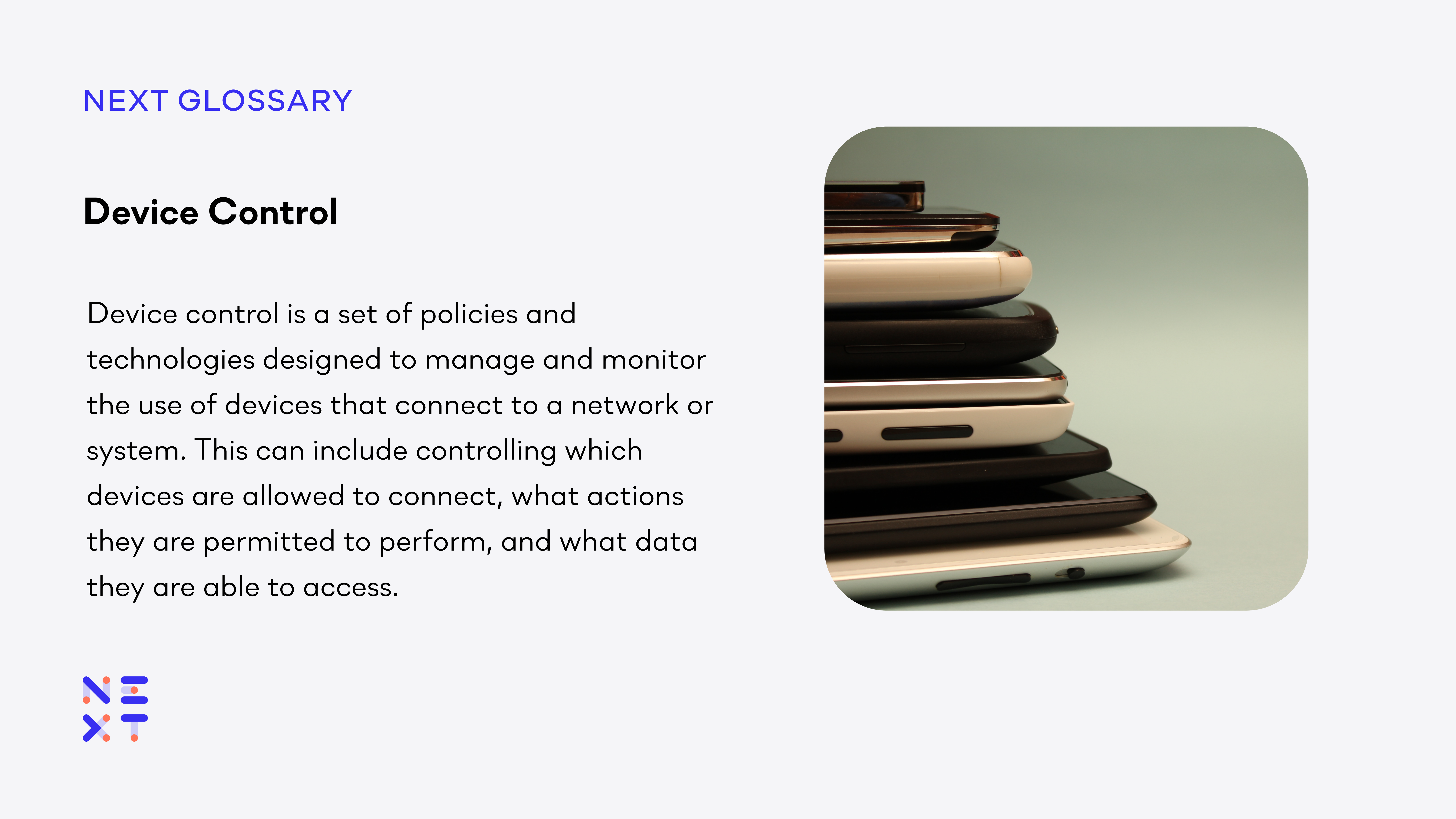"Device control" refers to the implementation of policies and measures to manage and control the use of devices within an organization's network or environment. It involves monitoring and regulating the connection, access, and usage of devices, such as computers, smartphones, tablets, or other endpoints.

Device control plays a crucial role in mitigating insider risks and protecting data by enforcing policies that restrict and monitor the activities performed on devices.
Here's how it relates to insider risk and data protection in cybersecurity:
- Access control:
Device control solutions enable organizations to enforce access control policies, ensuring that only authorized individuals can use specific devices and access sensitive data. By limiting access to trusted personnel, the risk of insiders with malicious intent causing harm or data breaches is minimized.
- Endpoint security:
Device control solutions often include endpoint security measures, such as antivirus software, firewalls, and encryption tools. These help protect devices from malware, viruses, and other cyber threats that insiders might inadvertently introduce to the network, either intentionally or through compromised devices.
- Data loss prevention (DLP):
Device control solutions can include DLP mechanisms that prevent unauthorized data transfers or leakage. They can monitor and block sensitive data from being copied to external storage devices, transmitted via email or messaging platforms, or uploaded to cloud services. This reduces the risk of insiders intentionally stealing or accidentally exposing critical information.
- Remote device management:
With the increasing prevalence of remote work, device control becomes even more crucial. Organizations need the ability to remotely manage and control devices used by employees outside the corporate network. This includes features like remote wiping, tracking, or locking of devices in case of loss, theft, or when an insider's privileges are revoked.
- Policy enforcement:
Device control solutions allow organizations to define and enforce policies regarding the use of devices. For example, they can restrict the installation of unauthorized software, block access to certain websites, or enforce strong password requirements. By enforcing these policies, organizations can reduce the likelihood of insiders engaging in risky behaviors that could compromise data security.
- Auditing and monitoring:
Device control solutions provide auditing and monitoring capabilities, allowing organizations to track and record activities performed on devices. These logs can be used to detect and investigate suspicious or unauthorized actions by insiders. Monitoring can also help identify potential vulnerabilities or misconfigurations that insiders might inadvertently introduce, enabling proactive mitigation.
Overall, device control is an essential component of an organization's cybersecurity strategy to address and manage insider risk and protect sensitive data. By implementing appropriate controls and policies, organizations can reduce the likelihood of insider threats and ensure the security and integrity of their digital assets.

